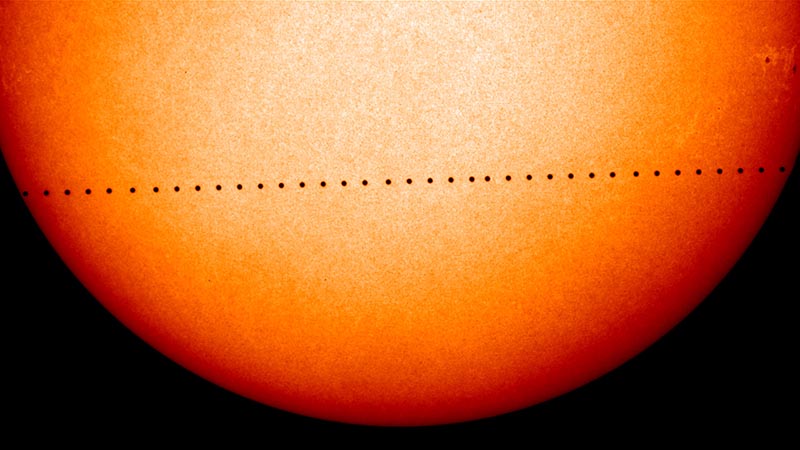This Monday, May 9th, a rare event is coming that will allow us to watch the planet Mercury as its orbit carries it across the sun. This event is called a "transit" and the last time it happened was ten years ago in 2006. From about 7:12AM to 2:42PM EST (that's Eastern Standard Time, the time zone that holds Montreal, Toronto, and New York City) the tiny, round shape of Mercury will been seen slowly moving across the face of the Sun.
Take care
But hold on there a second, you mini astronomers! Remember that staring directly at the Sun on May 9th will be just as dangerous as on any other day of the year. Second, even if you could withstand the Sun's rays (again, it's dangerous so don't do it!), you would not even be able to see Mercury with the naked eye. That's because it's so small (Mercury is barely bigger than the Moon).
Catching a glimpse
So what are your options if you wanna catch yourself a glimpse at the planet nearest the Sun? Glad you asked! To view safely and clearly, you need two things: a protective solar filter and a telescope. And though you might not have either of those things hanging around the home, there are lots of professional and amateur astronomy societies across the country that do. And with a little help from your parents, we bet some searching will dig up a local Transit of Mercury viewing party nearby. The cool thing is, with a viewing period that is as long as seven and a half hours in some parts of the country, everyone can afford to wait for their turn at the telescope. (As long as its not cloudy!)
And if all else fails? Well, sites such as NASA's, will be hosting their own Mercury viewing parties where you can watch the transit online.
Why is it so rare?
A transit happens when a planet is passing directly between Earth and the Sun. Now given that Mercury's orbit is fully inside our own orbit of the Sun, and that it circles the star once every 88 Earth days... shouldn't we see it more often? I mean, it's moving around the 4 times a year! You might think that it would be more visible, but Mercury has a trick up its sleeve. Its orbit is tilted off of ours. This means that its usually either above or below our line of sight when it moves between us and the Sun.
Check out this quick NASA video showing Mercury's expected path and make plans to watch it for real this Monday!
 A composite of many Mercurys crossing the Sun during the last transit in 2006.
A composite of many Mercurys crossing the Sun during the last transit in 2006.










:rabbit: lulz